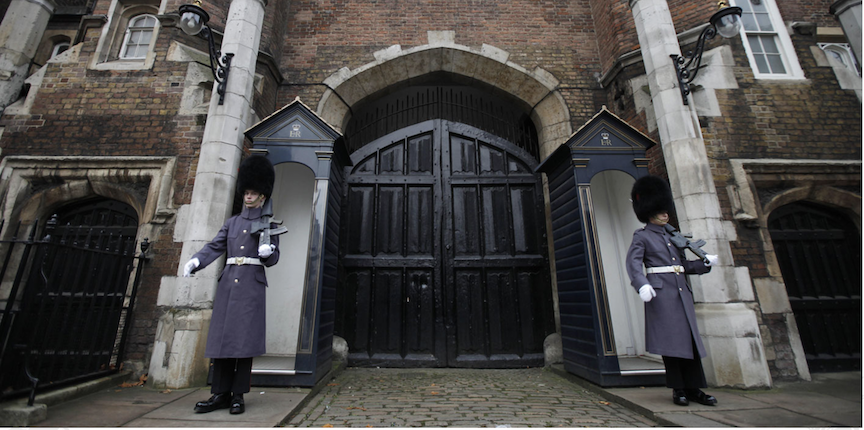
Built by Henry VIII, St. James Palace is the London home of Princess Anne, sister to Charles III, the current British king. Feel free to take photographs of the palace and its guards, but no knocking on the door and asking for candy on Halloween.
By Nancy Wigston
On a bright autumn afternoon, Rob Smith of Footprints of London waits at the agreed rendezvous point outside London’s elegant Ritz Hotel on Piccadilly Street. Looking not like a trenchcoated secret agent but the bespectacled London history teacher and city guide that he is in real life, Rob leads spy aficionados into the secretive world of the City of Westminster’s St. James district. The area is bounded by Piccadilly and Mayfair to the north, Green Park to the west, Haymarket to the east and The Mall to the south. The tour explores some of London’s oldest streets where spies—to use one of Rob’s favorite phrases—“hid in plain sight.”
From Deluxe to Deception
History permeates these stately streets, where King Henry VIII built St. James Palace in 1536 on the site of a leper hospital dedicated to St. James the less. King Charles III’s sister, Princess Anne, stays here when she’s in London. In green and pleasant St. James’s Park, at 57 acres the city’s largest public park, pelicans are fed fresh fish at 2:30 pm each afternoon. The birds were a gift to King Charles I before his beheading.
Following Rob along narrow Jermyn Street directly across from the Ritz entrance, we pass several shops where bespoke tailors, shoe, and toiletry makers boast of “special appointments” to British royalty.
Deluxe appearances aside, we are soon deep in spy territory where, during the turbulent 20th century, all the best agents and double agents frequented London’s clubs, hotels, and government offices.
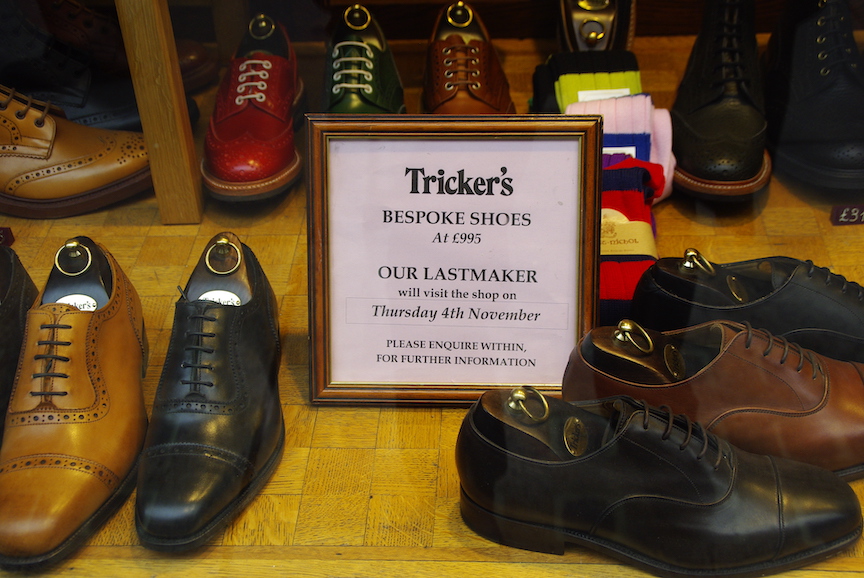
Want to visit Jermyn Street across from the Ritz Hotel and shop for shoes identical to those worn by men in the Royal Family? Tricker’s has exactly what you need for only $1,200. Photo by Nancy Wigston
English spying has a long and not-always-glorious history, dating at least to the reign of Elizabeth I who employed teams of spies to keep her safe from assassins. Her personal physician, a Portuguese Marrano named Roderigo Lopez fell out of favor with her spies for his supposed (and unlikely) plot to poison the monarch. Lopez was taken to the Tower of London, found guilty as charged, then hanged, drawn, and quartered.
Truly shocking in its time—the Queen’s physician was, after all, a foreigner—Lopez is widely assumed to be the model for Shakespeare’s Shylock.
Perhaps nothing rivals that sensational case more than the unmasking of the Cambridge Spy Ring 450-odd years later, in what one high-placed official called “the greatest treachery of the twentieth century.” Suspicious foreigners were one thing, but Cambridge men—five in all—men from the best families? Communism was fashionable among 1930s youth, and many blamed capitalism for the Great War, but the real mystery was that no one suspected these traitors for so long.
Spy Fever
Before the Great War of 1914-18, bestselling fiction by journalist and novelist William Le Queux fuelled rumors about German spies ensconced in a country totally unprepared for the coming invasion. “Invasion literature” boosted the circulation of tabloid newspapers. The Daily Mail, for example, took advantage of the panic by outfitting its vendors in military uniforms of Prussian blue. The inference: spies already are among us.
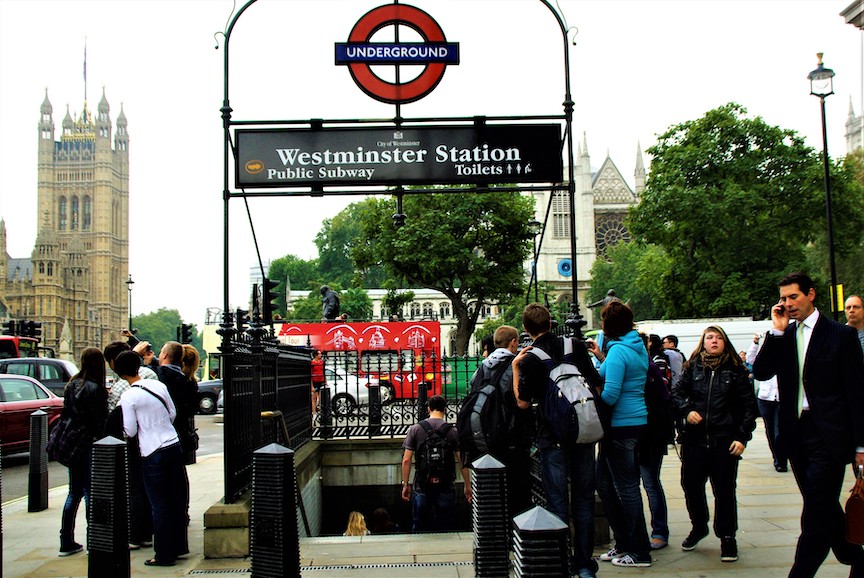
Take the London subway to Westminster Station to begin your Spy Tour. It is close to Piccadilly, Mayfair and the St. James district. Have tea and cakes at the Ritz before departing or wait until you arrive at St. Ermin’s Hotel bar to enjoy something stronger. Photo by Nancy Wigston
The increasingly nervous public mood caused the issue of German spies to be raised in Parliament. Answers were demanded from Prime Minister Asquith. How was he dealing with the “thousands” of German spies in London? Two agencies, MI5 (domestic, or home branch) and MI6 (foreign branch, now the Secret Intelligence Service) soon emerged. The latter was headed by Mansfield Cumming who flamboyantly signed his orders “C,” in green ink, a tradition followed to this day. In James Bond novels written by wartime intelligence officer Ian Fleming, the spy chief is simply dubbed “M.”
The tour’s first stop is near Christie’s Auction House, at an unremarkable Victorian brick building, 14 Ryder Street. Here Kim Philby, Britain’s most notorious double agent, worked in counterespionage during the Second World War. Novelist Graham Greene, his assistant, liked the charming, impeccably mannered Philby, recalling his “halting, stammered witticisms.” Others remembered his enormous capacity for alcohol, his intellect and his love of cricket. Another Philby admirer in the Ryder Street building was American James Angleton, future head of the CIA. Seconded to the war effort, Angleton quickly fell under Philby’s spell.
Serene, elegant St. James had been the district where Victorian gentlemen came to do business. Every transaction was based on trust. Being a gentleman equaled trustworthiness. Yet Kim Philby, Donald Mclean, Guy Burgess, Anthony Blunt and John Cairncross—all gentlemen, betrayed their country. Their reasons aren’t completely clear, but the Great War’s toll, plus growing fascism both in Europe and among British aristocrats, further alienated the young. Among them was Anthony Blunt who became Purveyor of the Queen’s Pictures. Unmasked in 1964, Blunt cooperated by sharing Soviet secrets. Margaret Thatcher stripped him of his knighthood in 1979.
Class Divisions: From Coppers to Toffs
From their inception, spy agencies attracted different classes of Englishmen. MI5 (the letters stand for “military intelligence”) largely drew from the ranks of the middle class, often former police officers. Mutual suspicion existed between the two branches, with judgments based on class. MI6’s members tended to be upper class, or “toffs,” in English slang. Kim Philby, very much a toff, had been a communist since 1934. Along with journalists like Ernest Hemingway and Martha Gellhorn, he traveled to Spain to report on the Civil War (for the London Times), narrowly surviving a mortar attack that killed three other people.
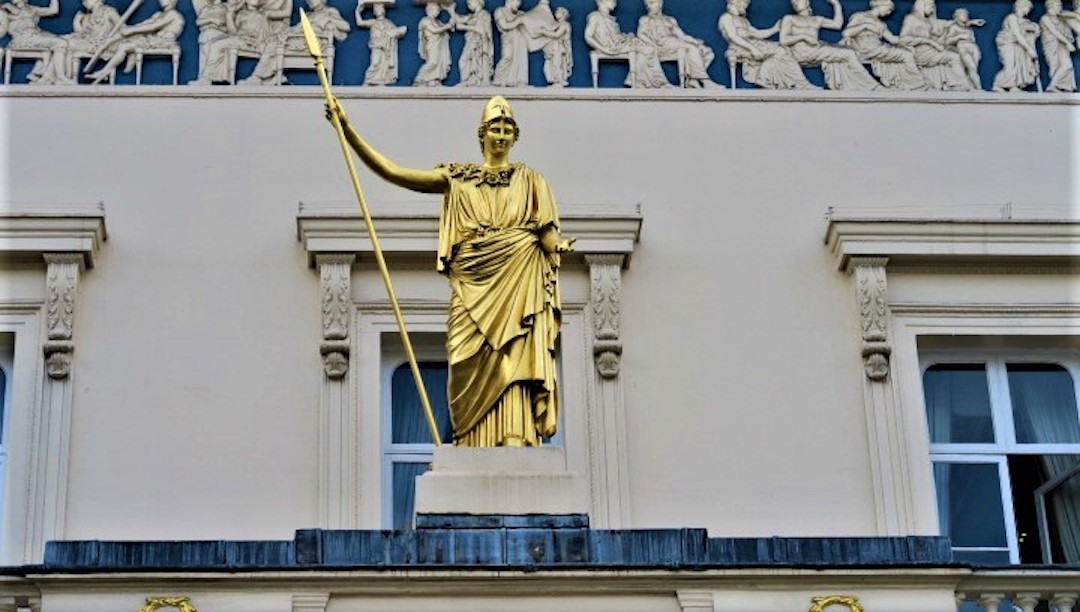
A gilded statue of Athena guards the entrance to the Athenaeum Club in London. British spies like Kim Philby who later became double agents frequented the institution. Oxford and Cambridge graduates still become members, but today they are more likely to be investment bankers. Photo by Nancy Wigston
In 1940, with England at war, Philby joined MI6, where the vetting process was slack, to say the least. Philby had attended Westminster, a good school, then Trinity College, Cambridge, an excellent university. He belonged an excellent club, The Athenaeum. All perfect credentials for a gentlemen spy. Today, a golden statue of Athena, looking as imperial as the day the club was founded in 1826, adorns the club’s entrance on Pall Mall, the street leading from St James Street to Trafalgar Square.
Not surprisingly, his Soviet bosses were suspicious about the ease with which Philby, and his fellow Cambridge alums, were welcomed into MI6. Asked about British spies in Moscow, Philby risked his career by borrowing the Soviet file from an MI6 chum. It said no British spies existed in Moscow. The Soviets were skeptical and from that day forward codenamed their highbrow informant “Sonny.”
Despite thirty years of service, thousands of documents stolen, and direct responsibility for the betrayal and murder of a thousand Allied agents, Philby was never wholly trusted by Moscow. In contrast, few on the Allied side distrusted the man, who possessed an English charm that Ben Macintyre, London Times journalist and writer of a dozen books on WWII spying, calls “intoxicating, beguiling, and occasionally lethal.”
During the Cold War, three of the Cambridge Spies worked in Washington, where CIA chief Angleton, continued his friendship with Philby, who headed MI6 in the US capitol. Angleton never entirely recovered after his friend defected in 1963.
Meet You at The Club
The Brits have a word that explains the ease that MI6 accepted these traitorous toffs. Simply put, they were “clubbable.” Members of gentlemen’s clubs were assumed to possess unimpeachable character by London’s ruling class. Pall Mall was dubbed “clubland” for its plethora of clubs, including The Travellers Club (for veterans of expeditions on behalf of the Empire), The Reform (founded by political radicals), The Royal Automobile Club (1908), and The Athenaeum, (for intellectuals). The old 18th-century coffee houses and gambling dens were nudged aside by these less debauched gathering places. Twenty-five private clubs (largely coed) exist in today’s London, and newer clubs mimic traditional decor: leather seating, book-lined walls, and classical columns.
London’s private clubs remain members-only: no photography, jackets and ties are required. One of the spy novel genre’s ironies is that these exclusive spots (Ian Fleming belonged to Boodles, which he called Blades in the Bond novels), appear as themselves in the Bond films: The Reform Club’s red carpet and massive columns appear in Die Another Day (2002), where Bond’s fencing duel clashed and clanged, and again in Quantum of Solace (2008), when M, played by Judi Dench, meets the Foreign Secretary in the Reform’s grand surroundings.
James Bond vs George Smiley
Ian Fleming, wartime Naval Intelligence officer and first-rate spy-catcher, worked in Room 39 of the massive Old Admiralty Building with its turrets, red brick, and creamy-white Portland stone facing the grounds of the Horse Guards Parade. Fleming directed a team of thirty in his fancifully named schemes. One of them, “Goldeneye,” protected Gibraltar while keeping watch on fascist Spain.
Equally vital to the war effort were England’s codebreakers. A German code book discovered in Iraq by a British Commander had been used to crack the codes for the Great War’s Battle of Jutland, the war’s largest naval battle. During WWII, math genius Alan Turing (his likeness is on Britain’s £50 note) famously solved the German Enigma Code, with his team at Bletchley Park.
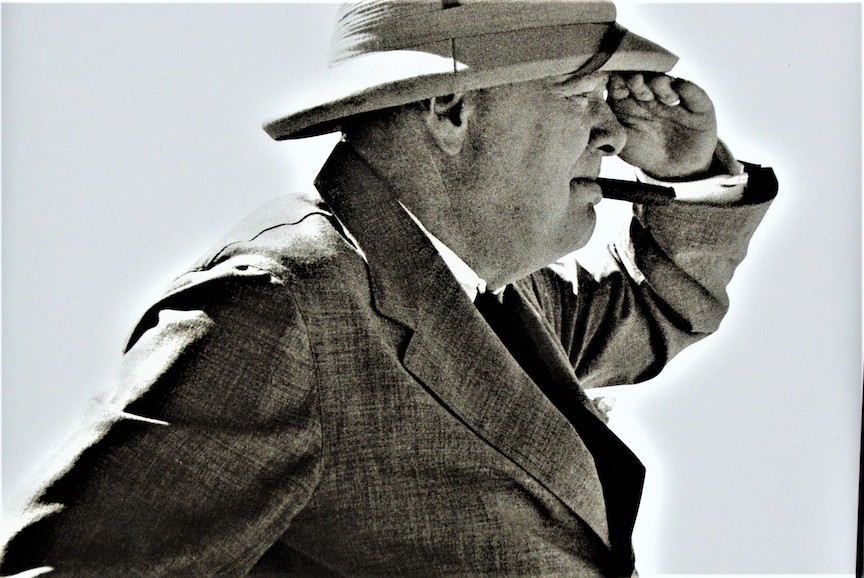
Winston Churchill hired spies with a variety of talents. Those skilled at sabotage and assassination were sent to France. Others more suited to espionage and blackmail were assigned to the United States.
After the war, Fleming’s friend, playwright, and fellow wartime British agent Noel Coward—the two men trained together at Bletchley Park–nagged him to write novels, and so appeared the spy James Bond, impeccably dressed, irresistible to women, licensed to kill. Coward, a merry lightweight in public, kept his wartime activities secret almost to the end of his life—he’d worked for Churchill’s “dirty tricks” squad—also known as The Irregulars—reporting from his frequent European travels, while trying to persuade America to join the fight.
One of the more successful Irregulars was Roald Dahl, an RAF fighter pilot known for his conviviality and sex appeal. He was recruited as a spy in 1942 by C.S. Forster, author of the popular Horatio Hornblower novels.
By that time, of course, the U.S. was in the war, but isolationists like magazine publisher Henry Luce wanted Washington to let Britain do most of the fighting in Europe. Churchill needed a robust ally, not just a lend-lease partner, so he sent Dahl to British Security Coordination (BSC), London’s U.S.-based espionage network. Dahl’s assignment: seduce Claire Booth Luce, wife of Time Inc’s publisher, and get embarrassing information that would either discredit her husband or force him to change his editorial policy.
Dahl followed orders but underestimated Mrs. Luce’s libido. In a phone call to London after one of Claire’s Washington soirées he pleaded to return home. “I’m all f****d out!” he cried. “That woman has screwed me from one end of the room to the other for three goddam nights!”
His request was denied.
After the war, Dahl came in from the cold to author a series of children’s books that include Matilda and Willie Wonka and the Chocolate Factory.
Another ex-spy, writer John Le Carre, painted a far less glamorous picture of the spy game. His lead character was a rumpled cuckold named George Smiley who was inspired by an Oxford tutor. Actor Gary Oldman, who played Smiley in the 2011 film, Tinker, Tailor, Soldier Spy, described Smiley as glamor’s antithesis: “no gadgets, no gizmos, no Aston Martin.” Interestingly, in that film, the smoothly handsome actor Colin Firth plays the villainous Philby-like traitor.
There is an enduring grandeur about old St. James, its wide expanses, its hotels and clubs, its Admiralty ties. Well worth a stop is the daily spectacle of the Changing of the Guard–the soldiers on horseback who protect Buckingham Palace.
Today’s horizon is dominated by The London Eye, the world’s tallest Observation Wheel that overlooks the Thames River. Built to mark the Millennium, it is now the city’s most popular tourist attraction.
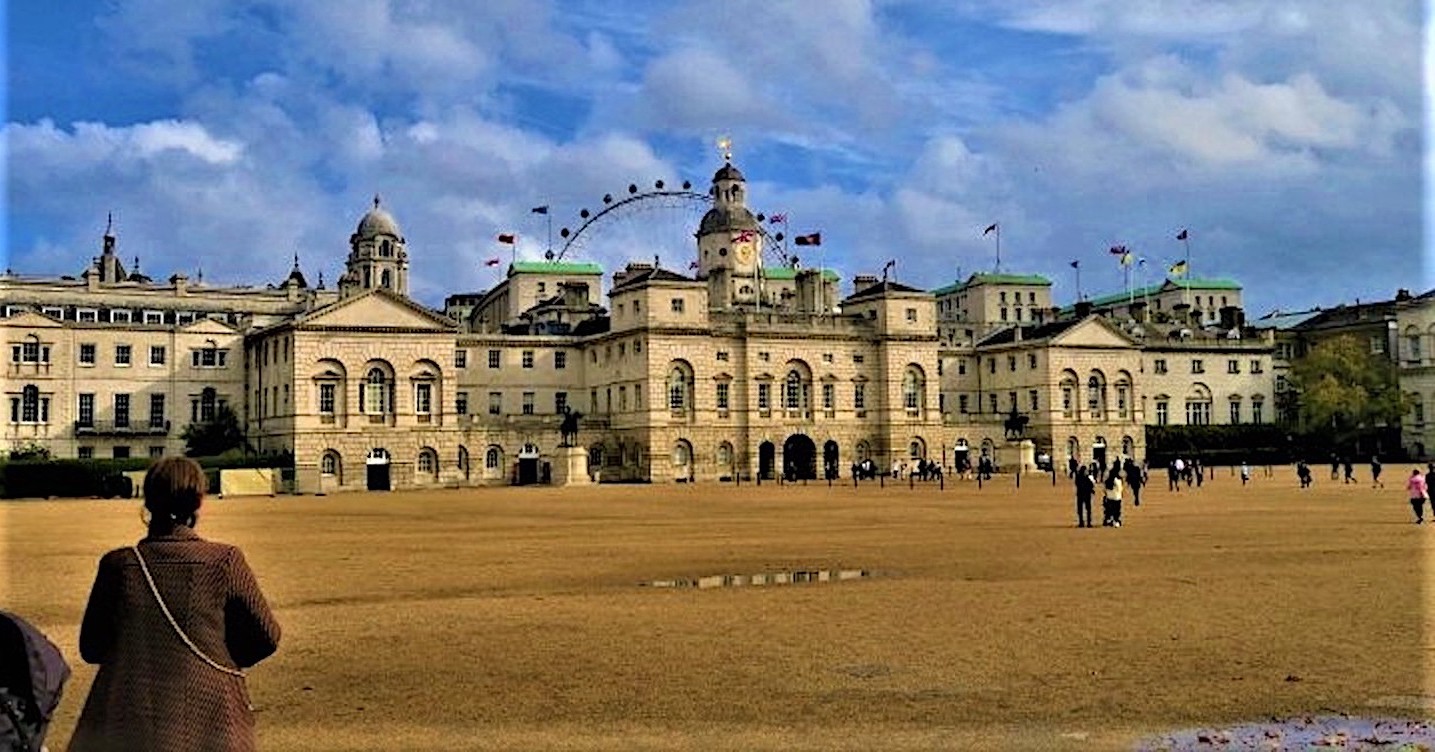
Spies like Ian Fleming worked out of the Old Admiralty Building during World War II. It faces the parade ground used by the Horse Guards. Soaring in the distance in back of the Admiralty is the London Eye, the world’s largest Ferris wheel. Photo by Nancy Wigston
Hidden in Plain Sight
The days when spies left secret messages in St. James’ parks may have passed, but quirky secrets still abound. There’s a gravestone for a prewar German officer’s dog buried beside the former German Embassy. Near the bottom of the Duke of York Steps which lead from the Mall to Waterloo Place there’s an unprepossessing door. It looks worn and neglected. But it opens onto a web of underground tunnels known as Q Whitehall. The tunnels link all the government buildings and possibly Buckingham Palace. Barely noticeable, this door, just don’t try to open it.
Next to the vast Admiralty Building, is a brutalist brick structure, its exterior somewhat softened with ivy. This is The Citadel a bomb-proof bunker, somewhat out of place with its imperial neighbors. In 1940-41 its thick concrete walls and roof (planted with grass to fool enemy pilots) protected workers from the bombs raining on the city. Inside, working in shifts, forty women sent messages decoded at Bletchley to British warships warning of impending attacks. Churchill called it a “vast monstrosity that weighs upon the Horse Guards Parade.” But the Admiralty Citadel still remains a closed government building, a secure bunker “hidden in plain sight.”
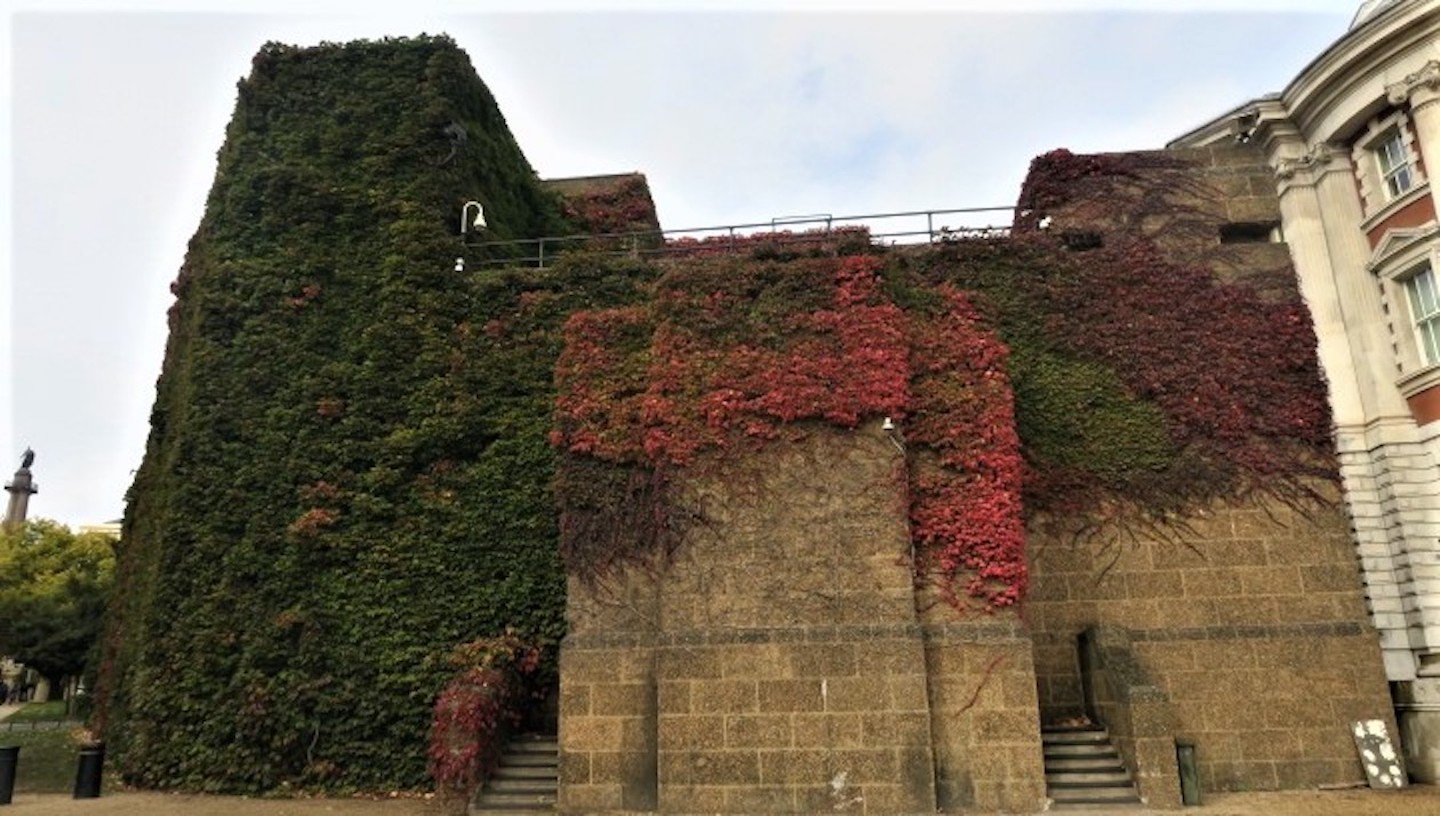
During World War II, around 40 codebreakers worked inside the bomb-proof Citadel, which was camouflaged with ivy to confuse the Luftwaffe. It’s still a government building but nobody seems to know what those working inside actually do. Photo by Nancy Wigston
Last Flight to Moscow
What happened to the Cambridge spies? Warned by Philby in 1951 that he was about to be unmasked, British diplomat Donald Maclean, along with his friend and fellow spy Guy Burgess, fled to Moscow. Burgess, an obnoxious drunk, was specifically told not to accompany Maclean. The sudden vanishing of two British diplomats made scandalous headlines. Philby was strongly suspected but brazened it out, championed by his MI6 allies and the future Prime Minster Harold MacMillan.
Until 1963. Then London sent his MI6 friend Nicholas Elliot to the Middle East to interview Philby, who was reporting for The Economist and The Observer. Philby arrived there in 1956 after Egypt’s nationalization of the Suez Canal. Disguised as a journalist living comfortably in Beirut, he was spying for MI6 while funneling information to Moscow.
When Elliot arrived to interview him, Philby realized the game was up. He fled to Moscow (a charmless city that Guy Burgess had compared to “Saturday night in Glasgow”,) expecting a hero’s welcome. There he was denied family visits and isolated in a flat near Moscow city center, under house arrest for several years, before going to work for the KGB, training agents. Two years after his 1988 death, a Philby stamp appeared. In 2008 Putin named a square after him when relations with the West soured.
Today’s Spies
MI5 and the SIS (MI6) now occupy a new, fortress-like headquarters on The Thames. Today’s spies tend to be computer nerds and hackers. No word of what clubs they belong to.
Another bunker, deeper than the deepest London subway, exists under the Ministry of Defence, a vast 1915 Whitehall building refurbished in the 1990s. Named Pindar after the Greek poet whose home was the sole survivor after ancient Thebes was destroyed, it’s the ultimate safe house, built to withstand civil breakdown and nuclear attack. Tunnels connect the Ministry of Defence to the Prime Minister’s residence at No. 10 Downing Street, Buckingham Palace, and Parliament. During the building’s reconstruction, workers came upon Henry VIII’s wine cellar, yet another buried secret in a city with more than its share.
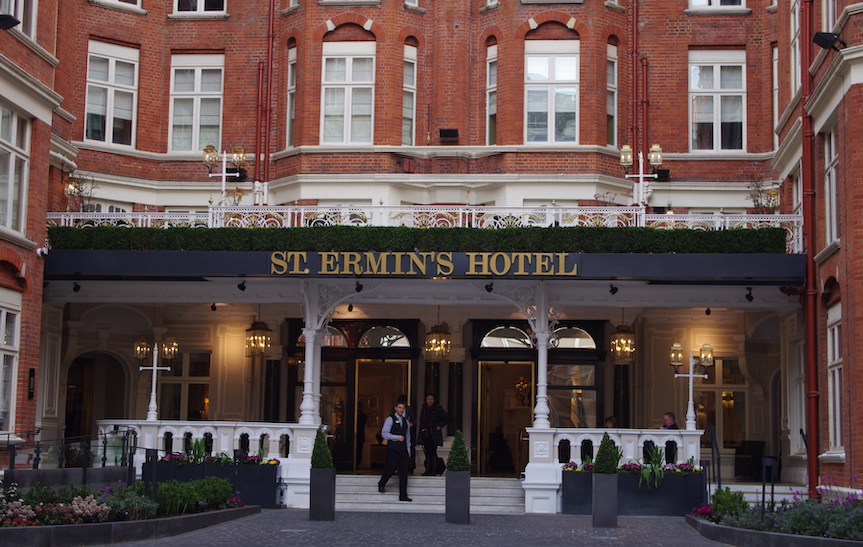
Located near to Parliament, the St. Ermin’s Hotel was a favorite of Winston Churchill and his Irregulars. It remains a popular location with an elegant bar and afternoon high tea service. Photo by Nancy Wigston
Churchill and the Irregulars
The tour’s last stop is the historic St. Ermins Hotel, a favorite recruiting spot for spies, and handy for Members of Parliament. The dowager hotel is grandly impressive with its curving central staircase, dazzling white lobby, and its bar, where, over champagne, Churchill invited special individuals to form the Special Operations Executive (SOE, the Irregulars). Known as the Spy Hotel, St Ermins was close to MI6 headquarters at 21 Queen Anne’s Gate, and agents and double agents often gathered here for drinks after work. When the Division Bell rang, government ministers left the bar and returned to Parliament, via a tunnel behind a now-sealed door.
Even in an era when being a gentleman qualified one for MI6, not everyone was impressed with the old boy network. Winston Churchill allowed only native speakers into the SOE. Their missions took them into enemy territory via parachute or boat as trained saboteurs.
An outstanding SOE member was Violette Szabo, a young French-British widow, mother, and brilliant saboteur, who died fighting the Nazis. Her face adorns the monument to 117 SOE agents killed in the war that stands on the banks of the Thames opposite Lambeth Palace, the residence of the Archbishop of Canterbury.
The story of Violette and her fellow saboteurs (fifty-five women among them) end the tour on a heroic note. Drinks at the bar or enjoyment of the hotel’s superb high tea complete a splendidly informative afternoon. Walking for a few hours along the winding streets and grand squares of one of London’s oldest and poshest districts unveils Winston Churchill’s dirty tricks, Ian Fleming’s intelligence schemes, Violette Szabo’s heroism, a raft of upper-class traitors and Henry VIII’s wine cellar. All combine to form a colorful London tapestry arrayed against a backdrop of fine hotels and secret bunkers.![]()

